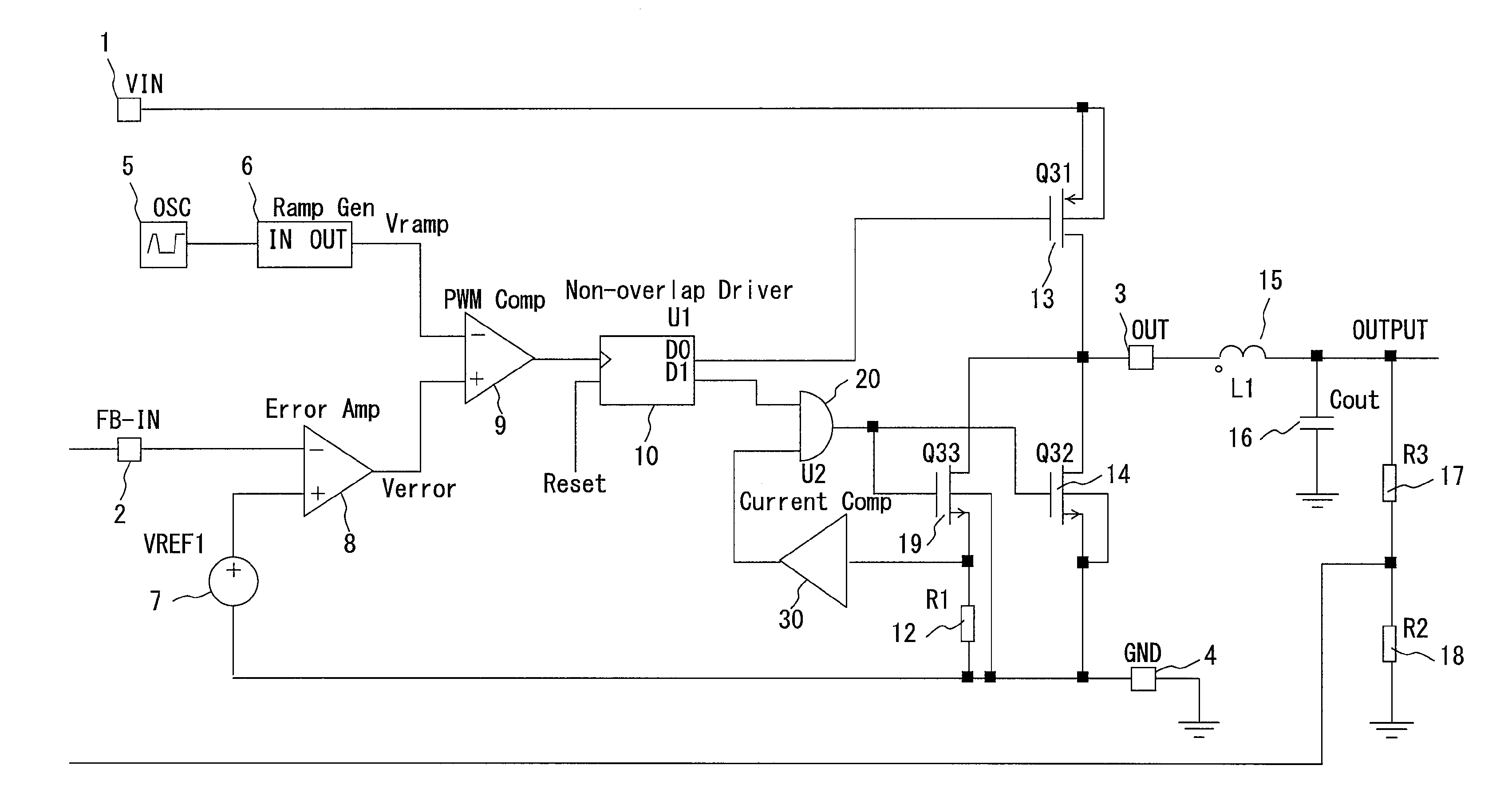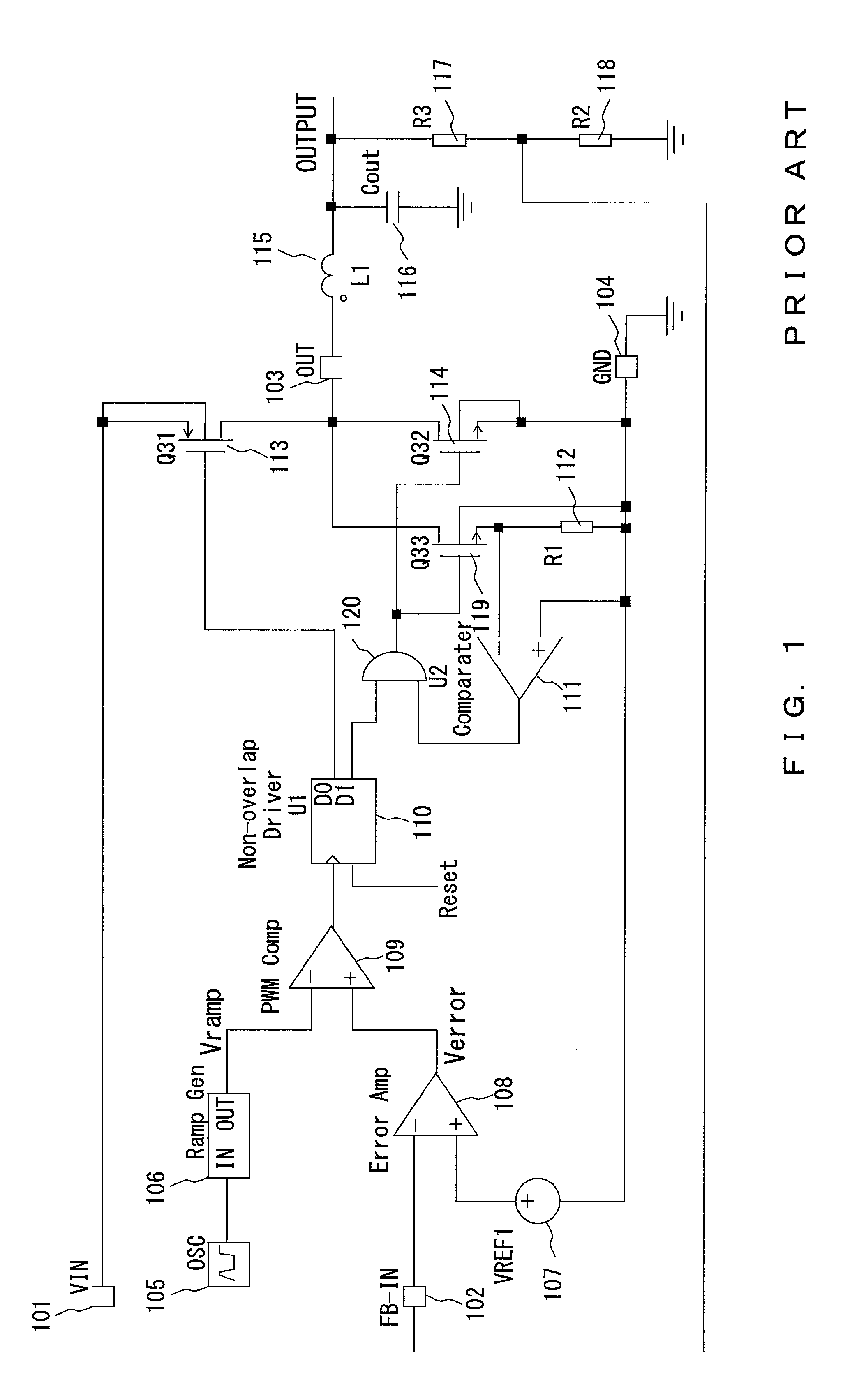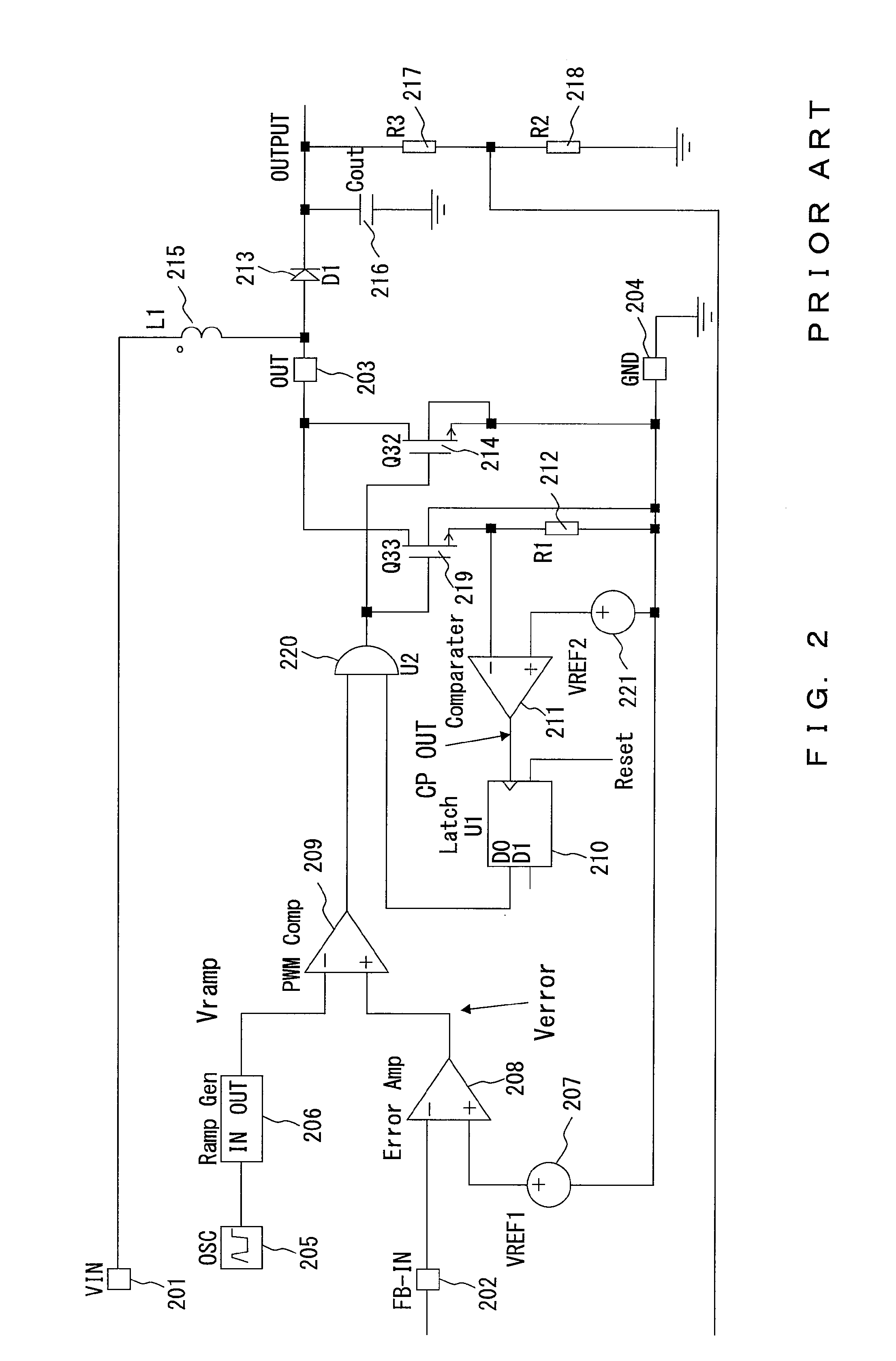Abnormal current preventive circuit of dc-dc converter
a dc-dc converter and preventive circuit technology, applied in pulse manipulation, pulse technique, instruments, etc., can solve the problems of affecting the operation of the dc-dc converter, the effect of avoiding the destruction of the switching device, enhancing the area efficiency of manufacturing the device, and keeping a wasteful margin for the switching devi
- Summary
- Abstract
- Description
- Claims
- Application Information
AI Technical Summary
Benefits of technology
Problems solved by technology
Method used
Image
Examples
embodiment 1
[0048]FIG. 3 shows a configuration of the abnormal current preventive circuit and the synchronous rectification buck type DC-DC converter including the circuit according to an embodiment of the present invention. In FIG. 3, the configuration includes: an input power source terminal (VIN terminal) 1; a feedback voltage input terminal (FB-IN terminal) 2 to which a feedback voltage detected after dividing an output voltage (OUTPUT) supplied to a load not shown in FIG. 3 by a resistor R3 (17) and a resistor R2 (18) is input; an output terminal (OUT terminal) 3 of a circuit for controlling energy accumulation / release (hereinafter energy accumulation is referred to as ‘charge’, and energy release as ‘discharge’); a ground terminal (GND terminal) 4; an oscillator (OSC) 5 for outputting a clock signal; a ramp generator 6 for generating a ramp signal Vramp by a trigger of the output of the oscillator (OSC) 5; an error amp 8 for comparing a feedback voltage with a reference voltage VREF1 (7) ...
embodiment 2
[0075]The description above is prepared for the embodiment of the countercurrent preventive circuit in a buck type DC-DC converter, but a current comparator similar to the circuit described above for the embodiment can be applied to the overcurrent preventive circuit of the boost type DC-DC converter shown in FIG. 15. That is, FIG. 15 shows an example of the embodiment of the overcurrent preventive circuit in a boost type DC-DC converter. In the embodiment, the voltage comparator 211 in the conventional overcurrent preventive circuit shown in FIG. 2 for determining the presence / absence of an overcurrent by comparing the voltage of the detection resistor R1 (212) with the reference voltage VREF2 (221) is replaced with the current comparator 30 for determining the presence / absence of an overcurrent by comparing the current flowing through the current detection resistor R1 (12) with a predetermined reference current. When an overcurrent is detected using the current comparator 30, the ...
embodiment 3
[0076]FIG. 16 shows an embodiment of the overcurrent preventive circuit in a buck type DC-DC converter. Since a high-side switching device (Q31) 14′ to be checked for an overcurrent is connected to the power source 1, an abnormal current (overcurrent) detection resistor R4 (12′) is also connected between the source of a switching device (Q34) 19′ and the power source 1. The switching device (Q31) 14′ and the switching device (Q34) 19′ are configured by a Pch MOSFET unlike the switching devices Q32 and Q33 shown in FIG. 3. Therefore, the position of the input terminal of the current comparator 30 is different from that of the current comparator of the boost type DC-DC converter, and is changed to the connection point of the abnormal current (overcurrent) detection resistor R4 (12′) and the source of the switching device (Q34) 19′.
[0077]FIG. 17 shows a configuration of a current comparator used in preventing an overcurrent of the buck type DC-DC converter. In FIG. 17, the configuratio...
PUM
 Login to View More
Login to View More Abstract
Description
Claims
Application Information
 Login to View More
Login to View More - R&D
- Intellectual Property
- Life Sciences
- Materials
- Tech Scout
- Unparalleled Data Quality
- Higher Quality Content
- 60% Fewer Hallucinations
Browse by: Latest US Patents, China's latest patents, Technical Efficacy Thesaurus, Application Domain, Technology Topic, Popular Technical Reports.
© 2025 PatSnap. All rights reserved.Legal|Privacy policy|Modern Slavery Act Transparency Statement|Sitemap|About US| Contact US: help@patsnap.com



